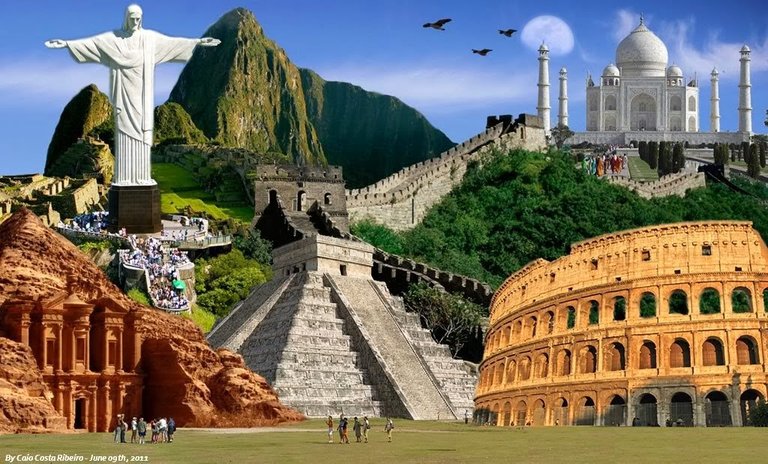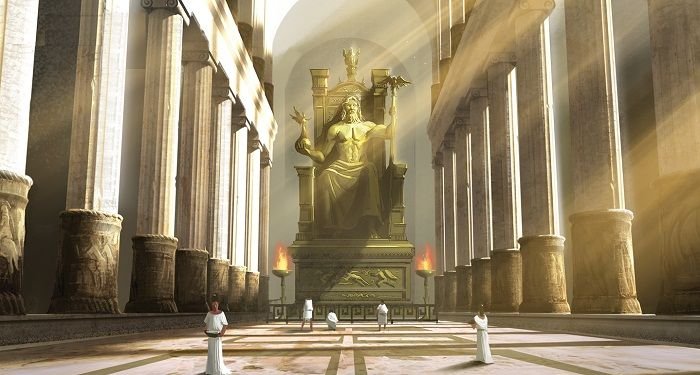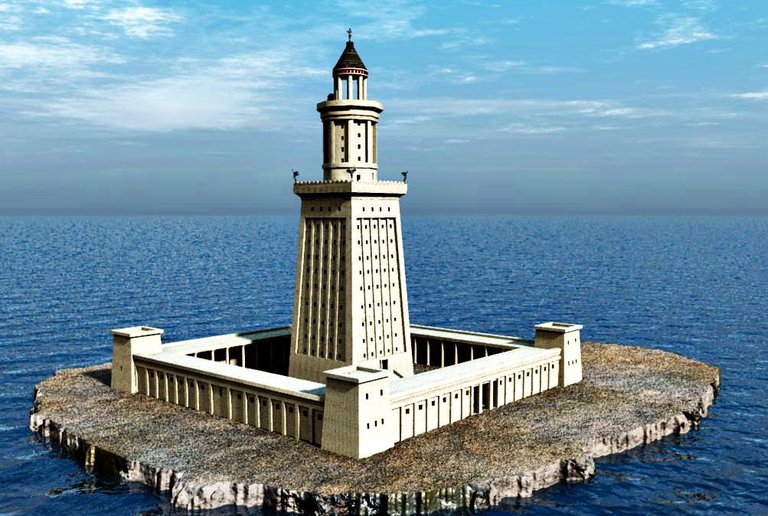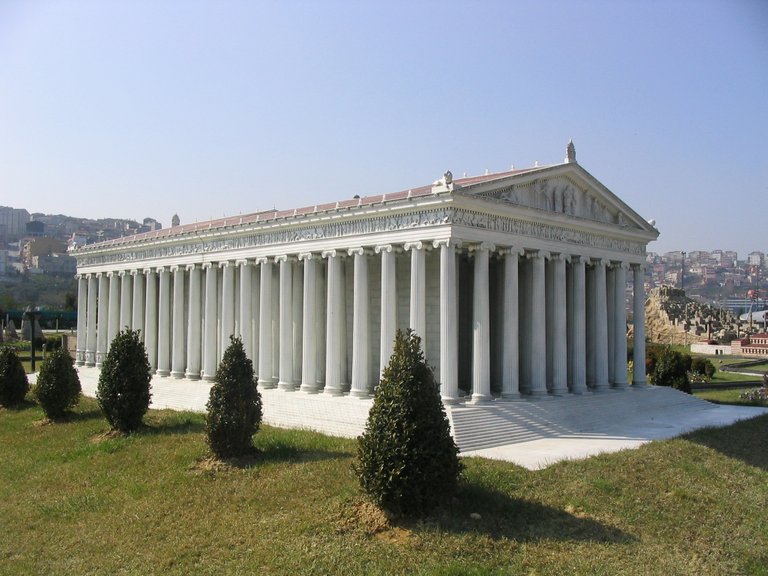
The Seven Wonders of the Ancient World refer to magnificent installations from ancient classical times, which were mentioned in many of the tourist guides popular among tourists in ancient Greece. Especially in the first and second centuries BC. The most prominent of these booklets is a booklet by Antipater of Sidon and Byzantine Philo. The booklet contains seven wonders, all of which are located around the Mediterranean Basin. Several books were written following the original booklet and often listed seven wonders. Which is still relatively sound to this day.
seven-wonders-of-the-ancient-world/mausoleum_of_halicarnassus.jpg
7 Wonders of the Ancient World
7 Mausoleum of Halicarnassus
The Mausoleum at Halicarnassus was built between 353 and 350 BC for Mausolus, a governor in the Persian Empire. After Mausolus died Artemisia, his wife and sister, (a custom in the region to keep the power and the wealth in the family) decided to build him the most splendid tomb, a structure so famous that the word Mausolus’s name is now the eponym for all grand tombs, in the word mausoleum. The construction was also so beautiful and unique that Antipater of Sidon put it on his original wonders of the world list

6Statue of Zeus at Olympia
7 Wonders of the Ancient World
Last updated on October 24, 2017 in History 5 Comments

5 Lighthouse of Alexandria
Lighthouse of Alexandriawikipedia/Wikipedia
The Lighthouse of Alexandria was built between 280 and 247 BC on an island at Alexandria to guide sailors into the harbor at night. Constructed from large blocks of light-colored stone, the lighthouse was made up of three stages: a lower square section with a central core, a middle octagonal section, and, at the top, a circular section. With a height estimated between 120 and 140 meters (390–460 ft), it was among the tallest structures on Earth for many centuries. The lighthouse was badly damaged by several earthquakes and disappeared completely in 1480, when the Sultan of Egypt built a fort on the site of the lighthouse, using some of the fallen stones. The name of the island that it was built on, Pharos, eventually became the Latin word for lighthouse.

4Temple of Artemis
Temple of Artemiswikipedia/Zee Prime
The Temple of Artemis at Ephesus was a Greek temple dedicated to Artemis, the goddess of hunt, wild animals and a lot of other things. It took 120 years to built and was finally finished around 550 BC. Built of marble, it was the favorite wonder of Antipater of Sidon. A young man called Herostratus burned the temple down on July 21, 356 BC to achieve lasting fame. The outraged Ephesians sentenced Herostratus to death and forbade anyone from mentioning his name, which apparently didn’t work out very well. That very same night, Alexander the Great was supposedly born. The temple was restored, destroyed by the Goths, and restored again. In 401, the temple was finally destroyed by a mob led by the Archbishop of Constantinople.

3 Hanging Gardens
Hanging Gardensflickr/iCarlitos
The Hanging Gardens of Babylon are the most mysteries of the seven wonders. Some historians even question whether the Hanging Gardens were an actual creation or a poetic creation due to the lack of documentation of them in the chronicles of Babylonian history. Supposedly , the gardens were built by the Babylonian king Nebuchadnezzar II around 600 BC. He is reported to have constructed the gardens to please his homesick wife who longed for the trees and plants of her homeland Persia.

2 Colossus of Rhodes
Built between 292 and 280 BC, the Colossus of Rhodes was a giant statue of the Greek god Helios, erected in the city of Rhodes. The Colossus was made of bronze and iron and stood over 30 meters (107 ft) high, making it one of the tallest statues of the ancient world. It was the last of the seven wonders to be completed but the first to be destroyed, by an earthquake in 226 BC.

1 Great Pyramid of Giza
The Great Pyramid wat Giza as built as a tomb for Egyptian Pharaoh Khufu over a 20-year period concluding around 2560 BC. It consists of an estimated 2.3 million limestone blocks transported from nearby quarries. The limestone blocks used for the casing was quarried across the river Nile. The gigantic granite stones found in the King’s chamber weigh 25 to 80 tons and were transported from Aswan, more than 500 miles away. At 146.5 meters (480.6 ft), the pyramid was the tallest man-made structure in the world for over 3,800 years. The Great Pyramid at Giza is the oldest of the Seven Wonders of the Ancient World, and the only one to have survived the wrath of time. Or, as an Arab proverb goes: “Man fears time, but time fears the Pyramids.”

Hi! I am a robot. I just upvoted you! I found similar content that readers might be interested in:
http://www.touropia.com/seven-wonders-of-the-ancient-world/
Damn good, i was about to report on 7 wonder but not ancient times. I have to say yours was pretty informative. Keep doing your thing. Fb as well lol